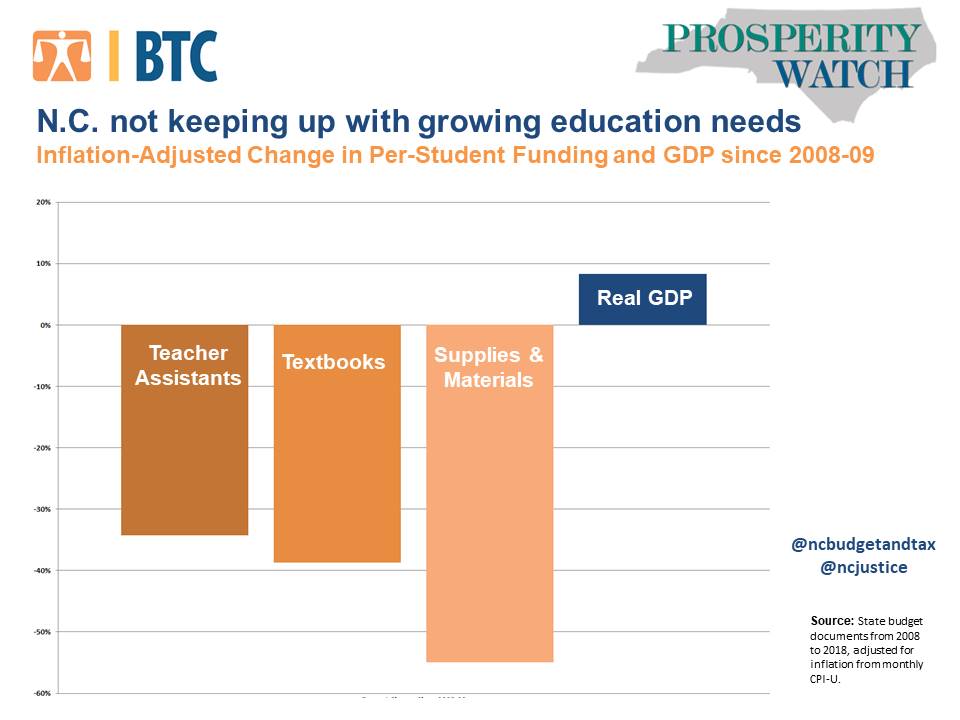Prosperity Watch, Issue 90, No. 3
Aug. 22, 2018
North Carolina’s investment in many of the vital resources needed to deliver a quality education is failing to keep pace with the demands of a growing state. This underinvestment is likely to harm North Carolina’s long-term economic prospects, and will create barriers preventing many North Carolinians from achieving economic prosperity and security.
Since the 2008-09 fiscal year, per-student funding for teacher assistants, textbooks, and supplies have been reduced 34 percent, 39 percent, and 55 percent, respectively, on an inflation-adjusted basis. Underfunding in these areas has been a persistent issue. The General Assembly’s 2018 budget provided no increase for classroom supplies or teacher assistants.[1]Funding for textbooks was increased by $753,283, or approximately 48 cents per student.
Investments in these areas are essential for ensuring that all students can graduate from school ready for college or a career. For example, a 2016 study from researchers at Duke and UNC examined data from North Carolina showing that teacher assistants improve math and reading scores, particularly for students of color. For textbooks, studies have found that increased funding can improve test scores of elementary school students, while choosing the right textbook can have the same impact as reducing class size by 10 students.
North Carolina can afford to increase investments in classroom resources. Restoring these three funding streams for teacher assistants, textbooks, and supplies to pre-Recession levels would cost approximately $319 million per year. From 2008 to 2017, North Carolina’s GDP grew by 8.3 percent in real terms. Had investment in classroom resources stayed steady, funding in these categories would have been $345 million above current levels. Instead, lawmakers have prioritized a series of tax cuts that have disproportionately benefited corporations and wealthy North Carolinians.
North Carolina’s economic successes in the second half of the 20th Century was driven by sustained investment in public education, and failing to continue that legacy could imperil our collective economic future.
[1] Total funding for teacher assistants will increase slightly to account for a two percent salary increase, but will not increase the number of teacher assistants hired.
 Justice Circle
Justice Circle 
